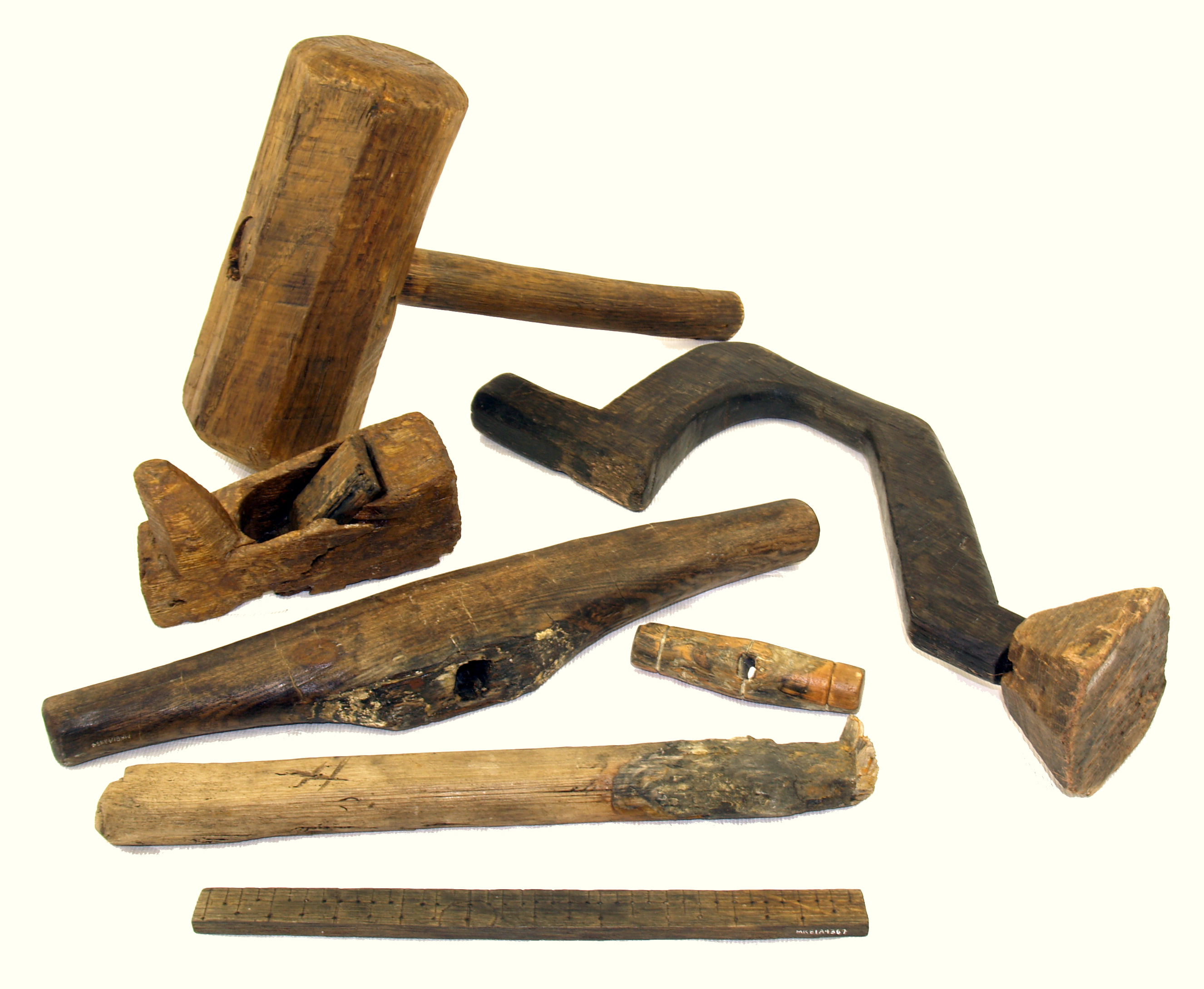|
Chip Breaker
A chipbreaker or chip breaker is a contour just behind the cutting part of a Cutting tool (machining), cutting tool that directs away any chips that are generated. Metal chips are hot, sharp, and can spin at high speeds, especially if they get caught in machinery. Breaking up the chips into smaller pieces is an important Safety, safety feature since long chips that get caught in people and machinery can lead to serious Work accident, workplace accidents. It can also damage Tool, tools, Workpiece, workpieces and Machine tool, machinery, and make removal of the finished product more difficult. Chips can be particularly challenging with ductile materials. Many geometries can be used depending on the given cutting conditions. For example, a high-positive rake angle will help to make shorter chips. On many Cutting ceramic, ceramic cutting tools, the chipbreaker is sandwiched between the cutting plate and the Milling clamp, clamping jaw, as this eliminates the need for a wide variety ... [...More Info...] [...Related Items...] OR: [Wikipedia] [Google] [Baidu] |
Cutting Part
Cutting is the separation or opening of a physical object, into two or more portions, through the application of an acutely directed force. Implements commonly used for cutting are the knife and saw, or in medicine and science the scalpel and microtome. However, any sufficiently sharp object is capable of cutting if it has a hardness sufficiently larger than the object being cut, and if it is applied with sufficient force. Even liquids can be used to cut things when applied with sufficient force (see water jet cutter). Cutting is a compressive and shearing phenomenon, and occurs only when the total stress generated by the cutting implement exceeds the ultimate strength of the material of the object being cut. The simplest applicable equation is: :\text = or \tau=\frac The stress generated by a cutting implement is directly proportional to the force with which it is applied, and inversely proportional to the area of contact. Hence, the smaller the area (i.e., the sharper ... [...More Info...] [...Related Items...] OR: [Wikipedia] [Google] [Baidu] |
Cutting Tool (machining)
Cutting is the separation or opening of a physical object, into two or more portions, through the application of an acutely directed force. Implements commonly used for wikt:cut, cutting are the knife and saw, or in medicine and science the scalpel and microtome. However, any sufficiently sharp object is capable of cutting if it has a hardness sufficiently larger than the object being cut, and if it is applied with sufficient force. Even liquids can be used to cut things when applied with sufficient force (see water jet cutter). Cutting is a compression (physical), compressive and shearing (physics), shearing phenomenon, and occurs only when the total stress (physics), stress generated by the cutting implement exceeds the ultimate Strength of materials, strength of the material of the object being cut. The simplest applicable equation is: :\text = or \tau=\frac The stress generated by a cutting implement is directly proportional to the force with which it is applied, and ... [...More Info...] [...Related Items...] OR: [Wikipedia] [Google] [Baidu] |
Safety
Safety is the state of being protected from harm or other danger. Safety can also refer to the control of recognized hazards in order to achieve an acceptable level of risk. Meanings The word 'safety' entered the English language in the 14th century. It is derived from Latin , meaning uninjured, in good health, safe. There are two slightly different meanings of "safety". For example, " home safety" may indicate a building's ability to protect against external harm events (such as weather, home invasion, etc.), or may indicate that its internal installations (such as appliances, stairs, etc.) are safe (not dangerous or harmful) for its inhabitants. Discussions of safety often include mention of related terms. Security is such a term. With time the definitions between these two have often become interchanged, equated, and frequently appear juxtaposed in the same sentence. Readers are left to conclude whether they comprise a redundancy. This confuses the uniqueness that ... [...More Info...] [...Related Items...] OR: [Wikipedia] [Google] [Baidu] |
Work Accident
A work accident, workplace accident, occupational accident, or accident at work is a "discrete occurrence in the course of work" leading to physical or mental occupational injury. According to the International Labour Organization (ILO), more than 337 million accidents happen on the job each year, resulting, together with occupational diseases, in more than 2.3 million deaths annually. The phrase "in the course of work" can include work-related accidents happening off the company's premises, and can include accidents caused by third parties, according to Eurostat. The definition of work accident includes accidents occurring "while engaged in an economic activity, or at work, or carrying on the business of the employer" according to the ILO. The phrase "physical or mental harm" means any injury, disease, or death. Occupational accidents differ from occupational diseases as accidents are unexpected and unplanned occurrences (e.g., mine collapse), while occupational diseases are ... [...More Info...] [...Related Items...] OR: [Wikipedia] [Google] [Baidu] |
Tool
A tool is an Physical object, object that can extend an individual's ability to modify features of the surrounding environment or help them accomplish a particular task. Although many Tool use by animals, animals use simple tools, only human beings, whose use of stone tools dates back hundreds of millennia, have been observed using tools to make other tools. Early human tools, made of such materials as Rock (geology), stone, bone, and wood, were used for the preparation of food, hunting, the manufacture of weapons, and the working of materials to produce clothing and useful Cultural artifact, artifacts and crafts such as pottery, along with the construction of housing, businesses, infrastructure, and transportation. The development of metalworking made additional types of tools possible. Harnessing energy sources, such as Working animal, animal power, wind, or steam, allowed increasingly complex tools to produce an even larger range of items, with the Industrial Revolution markin ... [...More Info...] [...Related Items...] OR: [Wikipedia] [Google] [Baidu] |
Workpiece
A workpiece is a piece, often made of a single material, that is being processed into another desired shape (such as building blocks). The workpiece is usually a piece of relatively rigid material such as wood, metal, plastic, or stone. After a processing step, the workpiece may be moved on to further steps of processing. For example, a part can made out of bar stock and later become part of a semi-finished product. The workpiece is often attached to the tool being used via a jig or fixture, like for example to a milling machine via an angle plate, or to a lathe via a lathe faceplate. A vise is another example of a simple type of fixture used to fix workpieces. A workpiece may be subjected to various cutting operations, like truing, making fillets, chamfers, countersinking, counterboring, etc. It may also receive various surface treatments and finishes. The term "workpiece" has established itself within crafts and the manufacturing industry, and connects the work or tr ... [...More Info...] [...Related Items...] OR: [Wikipedia] [Google] [Baidu] |
Machine Tool
A machine tool is a machine for handling or machining metal or other rigid materials, usually by cutting, Boring (manufacturing), boring, grinding (abrasive cutting), grinding, shearing, or other forms of deformations. Machine tools employ some sort of tool that does the cutting or shaping. All machine tools have some means of constraining the workpiece and provide a guided movement of the parts of the machine. Thus, the relative movement between the workpiece and the cutting tool (which is called the toolpath) is controlled or constrained by the machine to at least some extent, rather than being entirely "offhand" or "wikt:freehand#Adjective, freehand". It is a power-driven metal cutting machine which assists in managing the needed relative motion between cutting tool and the job that changes the size and shape of the job material. The precise definition of the term ''machine tool'' varies among users. While all machine tools are "machines that help people to make things", not a ... [...More Info...] [...Related Items...] OR: [Wikipedia] [Google] [Baidu] |
Rake Angle
In machining, the rake angle is a parameter used in various cutting processes, describing the angle of the cutting face relative to the workpiece. There are three types of rake angles: ''positive'', ''zero'' or ''neutral'', and ''negative''. * Positive rake: A tool has a positive rake when the face of the cutting tool slopes away from the cutting edge at inner side. * Zero rake: A tool has a zero (or neutral) rake when the face of the cutting tool is perpendicular to the cutting edge at inner side. * Negative rake: A tool has a negative rake angle when the face of the cutting tool slopes away from the cutting edge at outer side. Positive rake angles generally: * Make the tool more sharp and pointed. This reduces the strength of the tool, as the small included angle in the tip may cause it to chip away. * Reduce cutting forces and power requirements. * Helps in the formation of continuous chips in ductile materials. * Can help avoid the formation of a built-up edge. Ne ... [...More Info...] [...Related Items...] OR: [Wikipedia] [Google] [Baidu] |
Cutting Ceramic
Cutting tool materials are materials that are used to make cutting tools which are used in machining (drill bits, tool bits, milling cutters, etc.) but not other cutting tools like knives or punches. Cutting tool materials must be harder than the material of the workpiece, even at high temperatures during the process. The following properties are required for cutting tool materials: *hardness, hot hardness and pressure resistance * bending strength and toughness *inner bonding strength *wear resistance **oxidation resistance **small propensity for diffusion and adhesion ** abrasion resistance **edge strength There is no material that shows all of these properties at the same time. Very hard materials, have lower toughness and break more easily. The following cutting tool materials are used: *Tool steels: They are relatively cheap and tough. Their hardness is sufficient to machine other steels. **Carbon tool steels: They lose their hardness at 200 °C **High speed steels: T ... [...More Info...] [...Related Items...] OR: [Wikipedia] [Google] [Baidu] |






